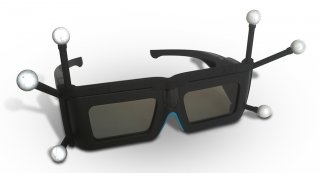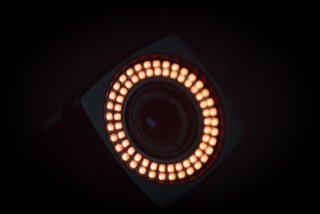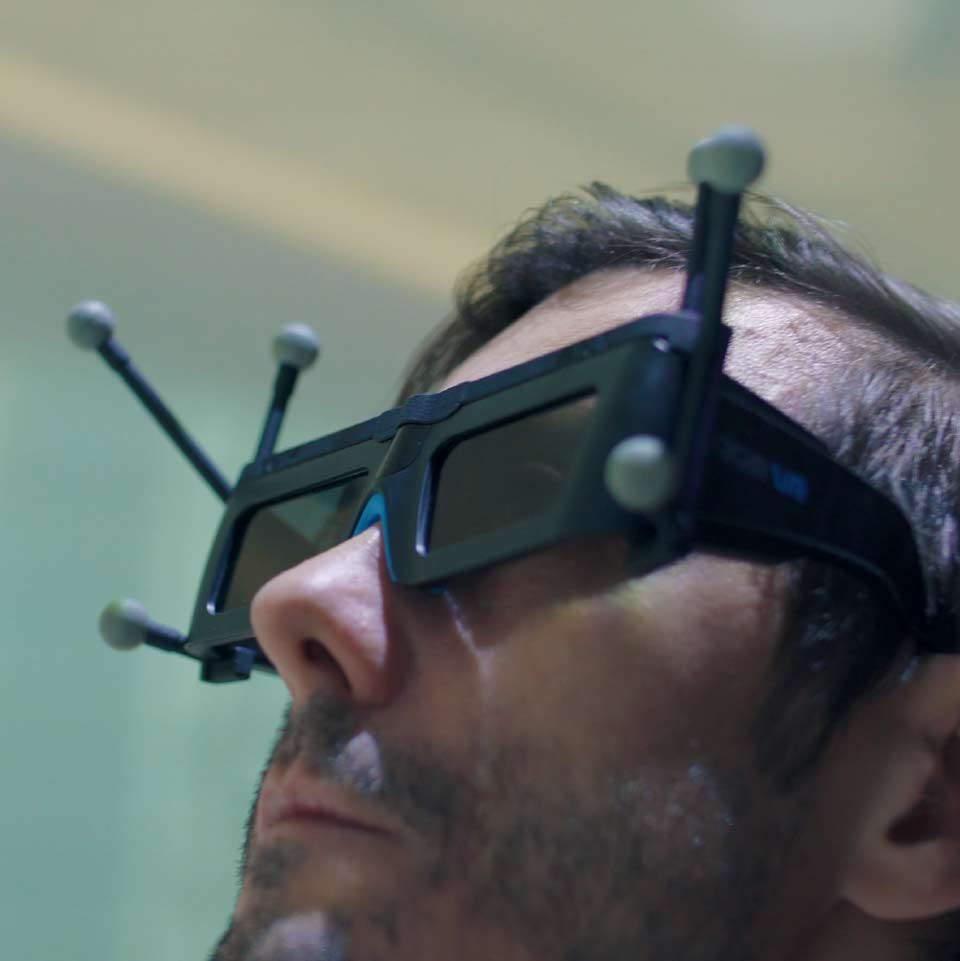
How do VR glasses work?
Stereoscopy
The glasses contain polarised lenses which show two images, one per eye, which the brain combines into one. In this, they are similar in operation to the 3D glasses used in cinemas to watch 3D films These combined images give a 3D depth and Virtual Reality. This technique is called stereoscopy. Manufacturers of virtual reality glasses, like our partner Volfoni, provide high-quality VR glasses with the following enhanced capabilities:Tracking
To track this movement of the user's point of view, the VR CAVE uses a number of tracking cameras which send signals to adjust the images seen by the wearer as they move around the VR environment. In this way, each time the wearer moves their head, walks in a particular direction or takes some other form of action, the scene in front of them changes as they does it. To maintain the immersion in the VR environment, the tracking of the VR glasses needs to be highly accurate; leading manufacturers like ART or Vicon specialise in this, and ensure that the users viewpoint in the 3D behaves in the same way as it would in the real world. Any delay or latency, caused by inaccurate tracking, would cause a disconnection between the two and in some cases, feelings of motion sickness. Learn more about tracking in our blog article: A brief guide to VR Motion Tracking
Want to stay up to date with what we're doing?
Follow us on Twitter, LinkedIn, Facebook and Instagram.
Learn more about tracking in our blog article: A brief guide to VR Motion Tracking
Want to stay up to date with what we're doing?
Follow us on Twitter, LinkedIn, Facebook and Instagram. 



















